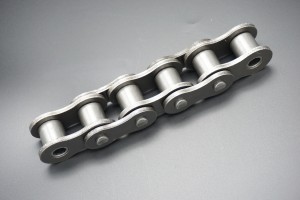Difference between 316 stainless steel chain and 304 stainless steel chain
In industrial applications, stainless steel chains are widely used due to their excellent corrosion resistance and mechanical properties. 316 stainless steel chain and 304 stainless steel chain are two common choices, which have significant differences in chemical composition, corrosion resistance, mechanical properties, processing performance, and applicable scenarios. The following is a detailed comparison of the two stainless steel chains:
1. Chemical composition
304 stainless steel chain: The main components of 304 stainless steel include 18% chromium (Cr) and 8% nickel (Ni), which gives it good corrosion resistance and oxidation resistance.
316 stainless steel chain: 316 stainless steel adds 2% to 3% molybdenum (Mo) to 304, which makes 316 stainless steel perform better in corrosion resistance, especially in chlorine-containing environments.
2. Corrosion resistance
304 stainless steel chain: 304 stainless steel chain has good corrosion resistance and can resist most common corrosive environments, such as weak acids, weak bases, and atmospheric corrosion.
316 stainless steel chain: 316 stainless steel chain has stronger corrosion resistance, especially in marine environment and high chloride environment. The addition of molybdenum significantly improves its pitting resistance.
3. Mechanical properties
304 stainless steel chain: 304 stainless steel chain has high strength and good toughness, suitable for a variety of industrial applications.
316 stainless steel chain: 316 stainless steel chain shows higher strength and toughness in high temperature and high corrosion environment, suitable for more severe working conditions.
4. Processing performance
304 stainless steel chain: 304 stainless steel chain has good processing performance, easy to weld, bend and form, suitable for manufacturing chains of various complex shapes.
316 stainless steel chain: 316 stainless steel chain has relatively poor processing performance, but its welding performance is good, suitable for applications requiring high corrosion resistance.
5. Applicable scenarios
304 stainless steel chain: suitable for general corrosive environments, such as food processing, architectural decoration, light industry, etc.
316 stainless steel chain: more suitable for highly corrosive environments, such as marine engineering, chemical industry, pharmaceuticals, medical devices, etc.
Six. Price
304 stainless steel chain: relatively low price, high cost performance.
316 stainless steel chain: relatively high price due to the addition of precious metals such as molybdenum.
Seven. Practical application cases
304 stainless steel chain
Food processing industry: 304 stainless steel chain is often used in conveyor belts of food processing equipment, because of its hygienic and non-toxic characteristics, it can ensure food safety.
Architectural decoration: In the field of construction, 304 stainless steel chain is used to make decorative parts such as doors, windows, and guardrails.
316 stainless steel chain
Marine engineering: 316 stainless steel chain performs well in marine environments and is often used for lifting and fixing equipment such as ships and offshore platforms.
Medical equipment: The high corrosion resistance and biocompatibility of 316 stainless steel chain make it an ideal choice for medical equipment.
Eight. Conclusion
316 stainless steel chain and 304 stainless steel chain each have their own advantages and disadvantages. Which chain to choose depends on the specific application requirements. If the application environment has high requirements for corrosion resistance, especially in marine or high-chlorine environments, it is recommended to choose 316 stainless steel chain. If the application environment is relatively mild and cost is sensitive, 304 stainless steel chain is an economical choice.
Post time: Feb-10-2025

